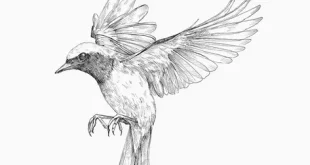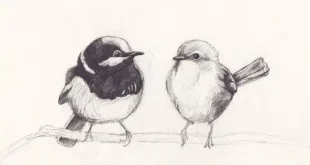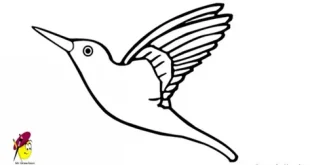What Makes Leptoptilos Birds Unique in the USA
1. Introduction to Leptoptilos Birds
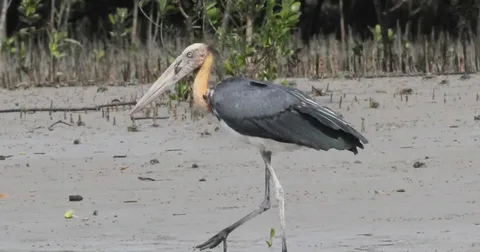
Leptoptilos birds are remarkable storks recognized for their enormous size, distinctive bills, and scavenging behavior. These fascinating creatures are mostly found in Asia and Africa, yet their unique reputation sparks curiosity even in the USA. Known for their bald heads, powerful wings, and slow but steady flight, they often resemble vultures in feeding habits. Many bird enthusiasts in the USA admire them for their adaptability and ecological role. Although not naturally widespread in America, the awareness of these birds helps highlight global avian diversity. Their conservation status requires attention since habitat destruction and human disturbance remain constant threats. Observing Leptoptilos birds reminds us of the vital relationship between species survival and human responsibility. Protecting them ensures future generations understand their importance and appreciate their ecological contributions across diverse regions.
2. Physical Features and Characteristics
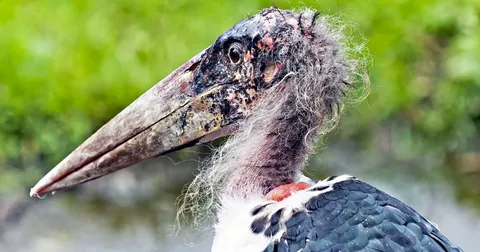
The physical features of Leptoptilos birds make them highly distinguishable among other large stork species worldwide. With heights reaching five feet and wingspans exceeding eight feet, they command immediate attention. Their large wedge-shaped bills allow them to feed efficiently on carrion and other food resources. Bald heads reduce infection risks while feeding, similar to adaptations found in vultures. Their plumage generally displays dull gray or black tones, accented with white underparts for better camouflage. These features fascinate bird watchers in the USA who seek information on exotic and rare birds. Leptoptilos birds remain a subject of research for both zoologists and conservationists interested in specialized avian adaptations. Observing their structure highlights evolutionary strategies designed for survival within harsh and challenging ecological environments across continents.
3. Leptoptilos Birds Habitat and Global Distribution
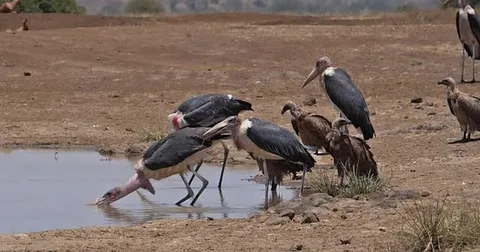
Leptoptilos birds primarily inhabit wetlands, marshes, and grasslands where carrion and aquatic prey are abundant. Native to countries like India, Cambodia, and several African regions, they thrive in warm and open environments. These birds prefer areas with minimal human disturbance, making remote wetlands ideal for nesting and foraging. Although not naturally native to the USA, their mention within American ornithological studies continues to grow steadily. Bird conservationists often compare their ecological role to scavenger species found in North America. Their presence in captivity also provides educational opportunities for raising awareness about international bird conservation. Understanding their habitat preferences highlights the urgent need for wetland preservation worldwide. Protecting these ecosystems ensures both migratory and resident bird species maintain stability, survival, and ecological balance across generations.
4. Behavior and Feeding Patterns

The behavior of Leptoptilos birds reflects a combination of patience, strength, and ecological importance within natural environments. They are known scavengers, feeding primarily on carrion, fish, and small animals in wetland surroundings. Their massive bills allow them to tear through tough skin, giving them an advantage when food is scarce. Unlike many other storks, these birds often associate closely with vultures around carcasses, showcasing their opportunistic nature. Bird researchers in the USA find such interactions useful for studying avian competition and ecological cooperation. They usually nest in tall trees or remote wetlands, forming colonies that provide safety and breeding opportunities. Their feeding habits not only clean ecosystems but also prevent disease spread by consuming decaying remains. This ecological contribution reflects their indispensable role in maintaining healthier and balanced habitats across regions.
5. Conservation Importance and Human Awareness
Conservation efforts for Leptoptilos birds remain vital as human activities continually threaten their survival across native habitats. Deforestation, urban development, and wetland destruction contribute significantly to population declines in several regions worldwide. Although sightings in the USA are rare, public awareness campaigns help build international concern for these magnificent creatures. Educational programs in zoos highlight their role, ensuring visitors understand their ecological and cultural significance. Conservationists emphasize that protecting wetlands supports countless species, not only Leptoptilos birds but also many migratory waterfowl. Stronger environmental policies and international cooperation remain necessary to preserve their habitats and safeguard future populations. By fostering global awareness, humans contribute directly to preserving ecological stability and biodiversity. Supporting their protection ensures ecosystems continue functioning effectively while maintaining balance between wildlife and human society.
Leptoptilos Birds: The Towering Giants of Wetlands
Leptoptilos Birds, also known as Marabou Storks, are large wading birds recognized for their impressive size, long legs, and distinctive bare heads. Found in wetlands, savannas, and riverbanks across the USA, they play an essential role in maintaining ecological balance. These birds feed on carrion, fish, and small animals, helping keep their habitats clean. Despite their somewhat intimidating appearance, Leptoptilos Birds are social and often gather in large colonies. Their large wingspan allows them to soar gracefully over vast landscapes while searching for food. Observing these majestic birds in their natural environment is a fascinating experience for bird watchers and nature enthusiasts alike.
Habitat, Feeding, and Conservation of Leptoptilos Birds
Leptoptilos Birds prefer open wetlands, grasslands, and riversides where food sources are abundant and accessible. They are opportunistic feeders, consuming both carrion and live prey, which helps maintain ecological health. These birds build massive nests on tall trees or cliffs, returning to the same nesting sites each season. Although they are not currently endangered, habitat destruction, pollution, and hunting pose potential threats to their population. Conservation efforts focus on wetland preservation and educating local communities about the ecological importance of Leptoptilos Birds. Their towering presence and unique appearance make them a fascinating symbol of nature’s diversity and resilience.
 Birds Drawing Birds Drawing
Birds Drawing Birds Drawing

